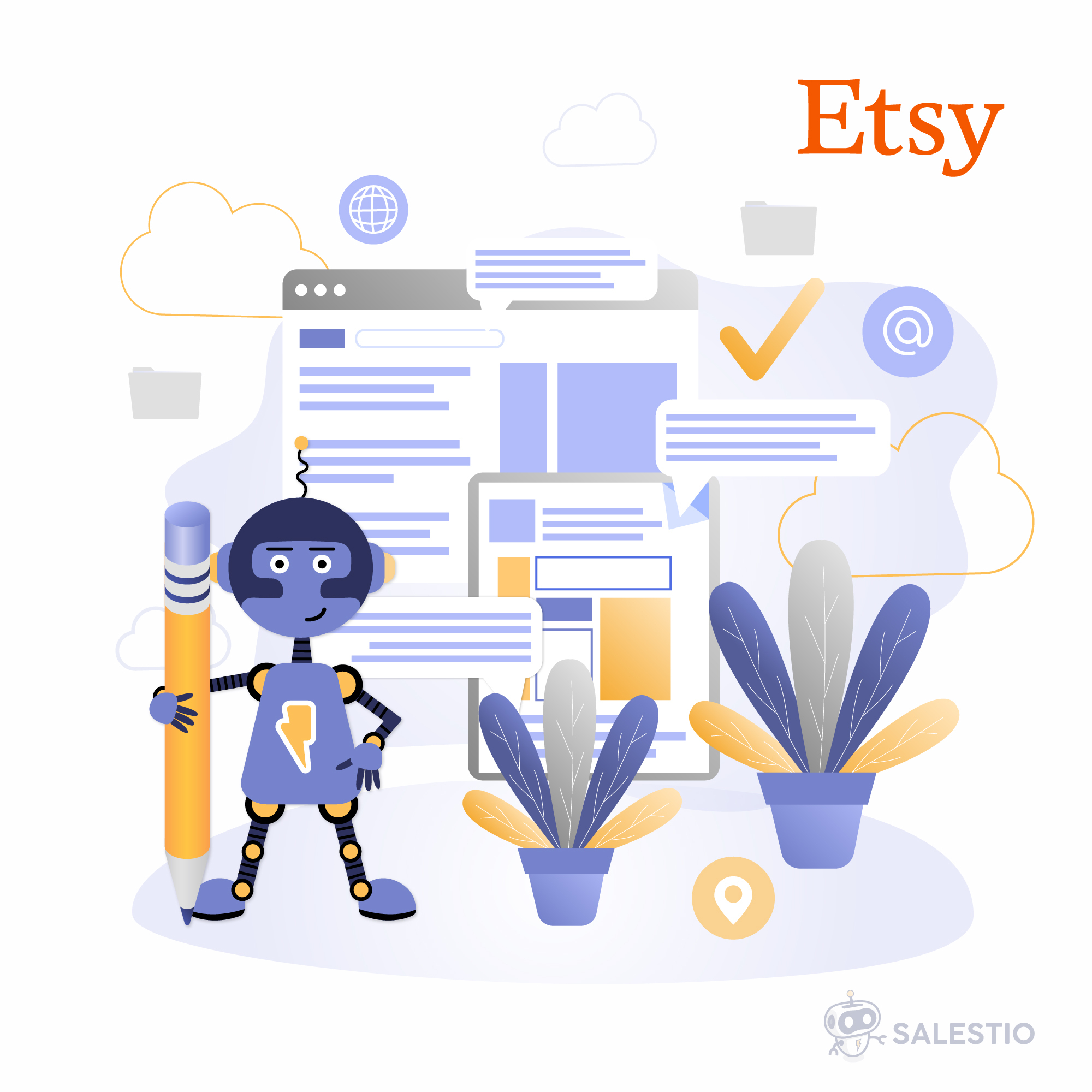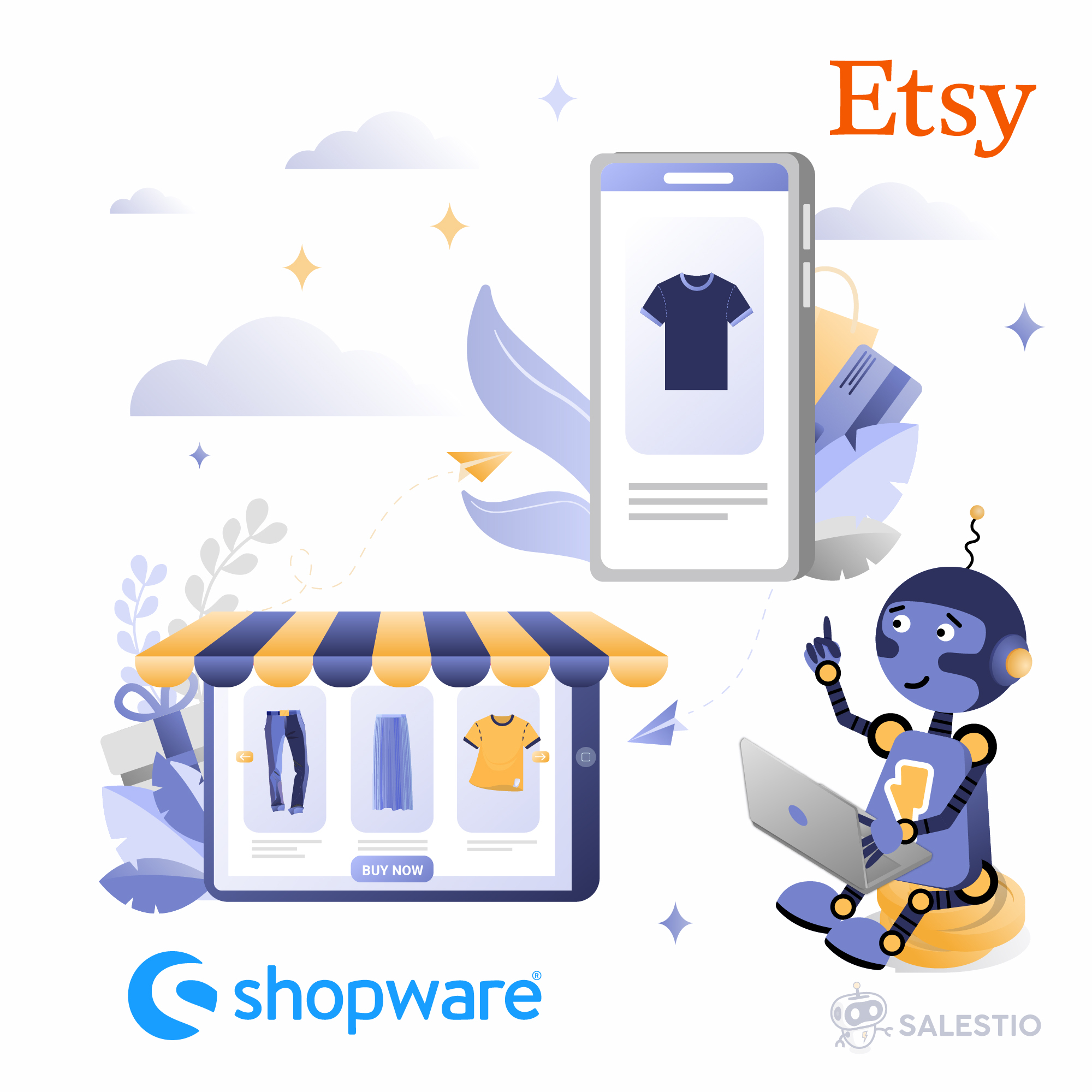09 Feb'24

Both eBay and Etsy are popular online marketplaces, but they cater to different types of sellers and products. While both of them are supported by Salestio, some buyers might want to specialize in terms of their selling platforms. Today we go over the most important differences between Etsy and eBay. We will explore what advantages and limitations are there, what kind of audiences are browsing, and which tools are available to the sellers.
Which items can be sold
Etsy is particularly well-suited for creative, handmade, and unique items that appeal to a more niche and artisan-focused audience. The categories range from vintage items to everything handmade like art supplies, unique digital and crafted items, or any other items customized by the seller.

eBay helps sellers to promote virtually anything: electronics, clothing, collectibles, home items, etc. The platform is also popular for automotive items, which prompted a separate eBay Motors section. You can buy anything ranging from car parts or accessories to entire vehicles on eBay.

What kind of buyers to expect
On Etsy, successful sellers often focus on building a brand story and emphasizing the handmade or vintage aspect of their products to appeal to the platform’s unique audience:
- Handmade and Unique Products Enthusiasts: Etsy’s primary audience consists of individuals who appreciate and actively seek out handmade, unique, and personalized items. They are often drawn to the craftsmanship and individuality of the products.
- Vintage Collectors: Etsy also attracts collectors of vintage items, as the platform allows the sale of items upwards of 20 years old, providing a marketplace for unique and nostalgic finds.
- Art and Craft Lovers: Etsy caters to those who have an interest in art, crafts, and DIY projects. This audience is more likely to appreciate goods from art people, to art people.
On eBay, sellers might highlight product features, competitive pricing, and a broader range of options to cater to a more general consumer base:
- Diverse Shopper Base: eBay has a broad and diverse audience, ranging from individuals looking for new or used electronics, clothing, and collectibles to hobbyists, collectors, and resellers. eBay attracts consumers seeking a wide range of products, including both common and rare items. It is not limited to a specific niche or category.
- Bargain Hunters: eBay often appeals to shoppers looking for deals, auctions, and competitive prices.
How the platforms help you grow
Both eBay and Etsy have their own ways to make selling easier and make the store look nicer. We will cover both platforms separately.
Etsy
In general, Etsy is designed to be easy to use and accessible to new sellers. The process of listing items is straightforward, and you can set up your shop to have a customized product grid on the front page. it is possible to feature select products to showcase your best-selling line or run a promotion. As for the listing pages, the platform does not offer much, allowing only adding titles, pictures, and a description. Descriptions do not support any kind of formatting, so making a listing stand out asks for a creative approach.

For sellers that want to expand their reach, Etsy offers rich analytics tools. With Etsy Search Analytics, sellers can review how their products are found and what kind of customers they have. You can see what search queries produce more sales and capitalize on that. Some metrics for each search query include impressions, revenue, and average order value among many others.
Etsy makes advertising an easy task. Listings can be promoted to show up higher in Etsy searches. The platform can also take care of promoting your listings on social media and search engines. This may help people who do not want to learn a separate platform to use ads.
eBay
While some may find the UI design on eBay less flashy and nice, the platform allows sellers to take matters into their own hands. eBay supports HTML/CSS formatting for descriptions, allowing sellers to use the most customized designs for their listings. Sellers can make their front page look how they want by featuring select products for promotion. If you have an eBay Store subscription, it is possible to set up your own categories, making the platform more visually similar to an e-commerce website.

The eBay Seller Hub is a centralized platform designed to streamline various aspects of selling on eBay. This tool makes starting the sales easy by giving useful insights and recommendations. It serves as a comprehensive tool that allows sellers to manage orders, access performance analytics, and handle other essential tasks within a unified interface.
For promoting the listings, eBay offers email marketing, cross promotions, promotion for similar items, and seller top picks. Compared to Etsy, you might get more cost-efficient in terms of ads: eBay only charges for ad clicks if the customer buys the item within 30 days.
Which one will you use?
Ultimately, the choice between eBay and Etsy depends on the type of products you sell, your target audience, and your preferences regarding customization and competition. Some sellers choose to utilize both platforms to reach different audiences. Regardless of your choice, Salestio can help you expand to both eBay and Etsy by exporting your Shopify catalog. If you are getting a fresh start on a new marketplace, consider getting a free 30-day trial of Salestio on the Shopify App Store and get a headstart: Salestio.





